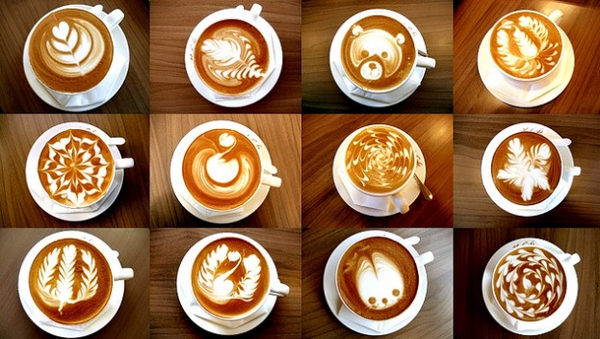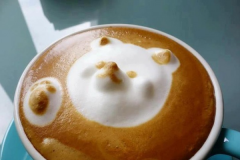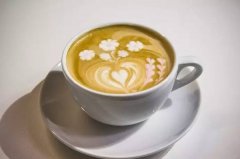Description of the distribution characteristics and flavor of Hawaiian coffee production area

, professional barista communication, please follow the coffee workshop (Wechat official account cafe_style)
What is the connection between Hawaii and coffee?
Hawaiian Islands, a group of islands in the north-central Pacific Ocean. The Hawaiian archipelago was also known as the "Sandwich Islands" between 1778 and 1898. Part of Polynesia is an archipelago of 19 larger islands and other small islands, mostly caused by volcanic or coral islands. Located between latitude 19 °and 29 °N, the Tropic of Cancer passes through the archipelago.
Belonging to the Pacific Ocean and Oceania, it is arranged in the southeast-northwest direction, with a total length of 2400 kilometers and an area of 16705 square kilometers. The largest island is the southernmost island of Hawaii, which is commonly known as "Big Island" by locals. The highest point is Mount Penakaia (Mauna kea) 4205 meters above sea level.
This summer, I also visited Hawaii and Ryukyu, two Pacific islands that are very similar to Taiwan's geography. At present, there is still a sense of familiarity and unfamiliar alienation for these two places. Take agricultural products as an example. Walking in Hawaii and Ryukyu, you can easily see sugarcane, bananas, pineapples, and even taros, which are common crops in Taiwan. However, in the three islands, there are also some unique crops unique to various places, such as Hawaiian beans. I believe it is the first impression of many people who have not yet been to Hawaii.
The following is the flavor of the main producing areas:
KAU producing area
Features: fresh and multiple fruit flavor, like red wine with cherry, strawberry, passion fruit flavor, smooth with cinnamon clove, cedar flavor, but also see syrup chocolate finish.
KONA producing area
Features: rich fruity aromas with hints of cherry, chocolate and black tea. The taste is clear and the balance is very good. It has traditional Kona flavor.
HAMAKUA producing area
Features: good aroma, with Swiss chocolate and hazelnut flavor. It has a distinct almond flavor.
PUNA producing area
Features: red wine-like aroma, dark chocolate flavor. It is smooth and tasty.
The most expensive coffee on the market: Kona Coffee
However, Kona Coffee is still one of the most expensive coffee on the market, and according to Hawaiian Agriculture Department regulations, coffee can only be called Kona Coffee on the slopes of Hualalai and Mauna Loa in Big Island, Kona. Hawaiian sunny mornings, cloudy and rainy afternoons, light breezes and mild nights, coupled with mineral-rich volcanic soil, give it a special flavor.
Kona Coffee can be divided into two categories: Type I (flat bean) and Type II pill bean (Peaberry).
According to the size, water content and purity of bean seeds, Type 1 is divided into 'Kona Extra Fancy',' Kona Fancy', 'Kona Number 1,' Kona Select', and 'Kona Prime'; Type II Kona coffee are divided into' Peaberry Number 1 'and' Peaberry Prime';, and a lower grade of 'Number 3' is not called Kona Coffee.
Kona Coffee's biggest threat in recent years comes from pests caused by the coffee pulp borer (Hypothenemus hampei). In late November 2010, the Hawaiian Department of Agriculture announced that all raw beans must be fumigated with methane bromide or another six-step procedure before leaving the island.
I'm afraid there will be huge fluctuations in the output and price of coffee in Kona producing areas in the future. Because of this, coffee farmers in lovely Island, Cafu Island and Maui Island have gradually emerged in the past two years.
Through Peter's local point of view, I hope to go through the silver bullet offensive of Japanese bean merchants and lead us to explore the coffee flavor of the Hawaiian islands, especially the direct dialogue with the local micro-farms to enjoy the unique coffee flavor. The operational experience of CSA (community-supported agriculture) developed in the past few years seems to be just right in this place.
Since it is time to introduce the place of origin, we will take you to Hawaii this time.
How much do you know about Hawaiian coffee beans?
Many people know that Jamaica is the most expensive place in the world. Blue Mountain, Panama? Geisha, but do you know that Hawaii is one of the most expensive coffee producers in the world? Before Panama Geisha, Hawaii's KONA was on a par with Blue Mountain, thanks to Japanese businessmen, who snapped up both places and became sky-high coffee beans. Of course, except for the reasons for being snapped up, its own quality is quite high, especially in Hawaii Kona, which is famous for its consistent and stable quality.
The grading of Hawaiian coffee beans is mainly divided into
Extra Fancy-- > Fancy-- > Number 1-- > Selected-- > Prime
The above names are graded according to the size and the number of broken beans, in which Type 1 means flat beans and Type 2 means round beans.
From the above classification, we can see that the grading of Hawaiian coffee beans is very strict. If KONA coffee beans are to be printed with 100% KONA on the package, they must meet the strict selection of the Kona Coffee Farmers Association and the United States Department of Agriculture before they can be labeled as 100% KONA. Coupled with the fact that Hawaii is a dependency of the United States, its administrative system is relatively civilized and its quality has rarely attracted criticism. on the contrary, the quality of Blue Mountain has been repeated in recent years, and buyers have complained from time to time.
Speaking of KONA, apart from knowing that there are KONA coffee beans in Hawaii, what are the coffee beans in the D producing area? Hawaii's famous producing areas have four KONA / PUNA / KAU / HAMAKUA, all of which are planted around volcanoes on the BIG ISLAND. The most famous and expensive is KONA, which has been planted for 200 years since 1800. The annual output is nearly 32,000 metric tons.
Natural advantages, including fertile volcanic soil, ample rainfall and sunlight, have led to the development of coffee farming from the KONA district, with coffee farms in the east, north and south. In the eastern part of the Big Island is the relatively new growing area PUNA, which has warm temperatures and rainfall, one of the three largest regions in the United States, growing at an altitude of 300,760Michael, which is also home to one of the best coffee beans in Hawaii.
Very sweet, well-balanced, with a strong and unique aroma for the main axis of Hawaiian coffee!
The flavor of Hawaiian coffee is similar to that of Blue Mountain, which is the main reason for winning the hearts of the Japanese. Japanese people traditionally like to drink some deep-roasted beans, and the main brewing tool is siphon. Coffee beans with characteristics like Blue Mountain and Hawaii have become their perfect match. Under the siphon brewing, the main emphasis is on sweetness and delicacy, which is the advantage of Hawaiian beans, which can be deep without bitterness under deeper roasting, and the aftertaste is long, which is also in line with the coffee habits of the Japanese, so the Japanese do not hesitate to do so.
Of course, in the era of boutique coffee, Hawaiian coffee can also stand in other parts of the world, because it can also bring different characteristics under different roasting degrees, while the taste of the main axis remains the same. it can also produce varied fruit flavors, such as cherries and strawberries like red wine, while the excellent chocolate aftertaste and syrup-like sweetness is also memorable. Therefore, in the third wave of the atmosphere, it will not be inferior to the emerging famous beans, so it is reasonable that it is expensive.
Excellent! Kona coffee cultivated by tears of Hawaiian volcano goddess
The volcano on the big island is the goddess of fear and love of the local residents, afraid of the goddess's anger, and her home is torched instantly, but she also loves the tears left by the goddess after anger, high temperature and thick magma, which forms a special soil after cooling. it has become one of the unique conditions for the growth of "Kona Coffee". Plants can't grow without sunshine, but coffee beans also need to be given proper shade. Hawaii, which is surrounded by the sea, because of the adjustment of the sea to the climate, the sun in the morning becomes soft through moisture, and by noon, the water vapor in the mountains condenses into fog, protecting the tree species.
There are no high mountains on the island, and the white clouds in the sky are surging with the wind, forming a sunshade that switches on and off automatically with the rhythm of nature. In the coffee country, "Kona Coffee" is like an aristocratic girl, most gently cared for by nature.
"Kona Coffee" is not a native plant of the big island. The earliest records can be traced back to 1813, when the Spaniards planted the first coffee tree, but it really flourished in the 19th century, when the bloodline inherited from Arabica, the three major coffee species in the world. she is not like the thick Italian coffee, nor the coarse mineral taste of Central and South American coffee, the combination of sour and sweet is very mild, and the aftertaste shows the aroma of fruit. People who don't like it think that "Kona Coffee" is too light, but this "fresh and natural" flavor is unique to "Kona Coffee" in the world of coffee.
UCC, a Japanese coffee brand, is no stranger to Taiwanese tourists. It sets up a farm in Hawaii. In response to Japan's love of Hawaii tourism, the farm is on the hillside. It is free to visit, and there are enthusiastic commentators who use English to convey coffee growing knowledge.
A pack of 100% pure Kona coffee 4oz is about $12, which is a medium-to-high price compared to ordinary coffee. 100% individual coffee beans are usually bought in Hawaii, and the farm exhibition offers a taste, which is reassuring to drink after drinking. Remind travelers that if you buy at the supermarket, remember to look at the packaging ingredients. Although some of the labels try "Kona Coffee Kona", only 5% of the coffee beans may be Kona coffee beans.
Australian nuts are Hawaiian beans.
The English name of Hawaiian beans is "Macadamia". It is also called macadamia nut because its origin is actually in Australia. It is 2 to 12 Michael's evergreen trees, Hawaiian beans are green seeds that fall from the tree, and the fruit is a hard woody ball with a distinct apex and containing one or two seeds.
Within two days of sitting on the ground, the Hawaiian bean will begin to explode and change color. Within four days, the seeds of Hawaiian beans will burst and turn brown and gray, which is the best stage of Hawaiian bean flavor in these days. If it is placed for too long, the shell will become too black and the nuts will lose their creamy flavor. At this time, it can not be called the top Hawaiian beans.
The third wave of the Coffee Revolution, the manors made their own achievements.
As for "Hawaiian coffee", in the early days, due to the Japanese pursuit and the successful marketing of Kona on the island of Hawaii (commonly known as Big Island), most consumers mistook Kona for Hawaiian coffee. In fact, the so-called Kona coffee refers to 100% coffee produced in Kona producing areas. (there is also 10%Kona coffee that mixes coffee beans from 10%Kona producing areas with coffee beans from other regions.)
As a matter of fact, under the third wave of the boutique coffee revolution, coffee farms on various Hawaiian islands have come out of the shadow of "Kona only" one after another, making their own way in the global market.
At present, the common Hawaiian coffee on the market, in addition to the kona district of the Big Island, including Maui, Cafu Island, and lovely Island, all have coffee estates on display. The common Hawaiian coffee includes different varieties such as Typica, Mocca and Catuai.
Important Notice :
前街咖啡 FrontStreet Coffee has moved to new addredd:
FrontStreet Coffee Address: 315,Donghua East Road,GuangZhou
Tel:020 38364473
- Prev

Colombian Coffee introduces the characteristics and Flavor to describe the Distribution of Variety planting areas
For the exchange of professional baristas, please follow the coffee workshop (Wechat official account cafe_style) A basic introduction to Colombian coffee volcanic soil + family operation Colombia is located in the northwest of the South American continent, bordering Panama in Central America. From the aerial view, it looks like it has been scratched by a cat on the west side, leaving three vertical paw marks from north to south. The famous producing areas of the country are scattered
- Next

How's the Hawaiian kona coffee? Description of the distribution and flavor of coffee beans in Hawaii
Exchange of professional baristas Please follow the third wave of the coffee revolution in the coffee workshop (Wechat official account cafe_style). As for Hawaiian coffee, in the early days, due to the Japanese pursuit, and due to the successful marketing in Kona producing areas of Hawaii (commonly known as Big Island), most consumers mistakenly thought Kona was Hawaiian coffee. In fact, the so-called Kona coffee means
Related
- Detailed explanation of Jadeite planting Land in Panamanian Jadeite Manor introduction to the grading system of Jadeite competitive bidding, Red bid, Green bid and Rose Summer
- Story of Coffee planting in Brenka region of Costa Rica Stonehenge Manor anaerobic heavy honey treatment of flavor mouth
- What's on the barrel of Blue Mountain Coffee beans?
- Can American coffee also pull flowers? How to use hot American style to pull out a good-looking pattern?
- Can you make a cold extract with coffee beans? What is the right proportion for cold-extracted coffee formula?
- Indonesian PWN Gold Mandrine Coffee Origin Features Flavor How to Chong? Mandolin coffee is American.
- A brief introduction to the flavor characteristics of Brazilian yellow bourbon coffee beans
- What is the effect of different water quality on the flavor of cold-extracted coffee? What kind of water is best for brewing coffee?
- Why do you think of Rose Summer whenever you mention Panamanian coffee?
- Introduction to the characteristics of authentic blue mountain coffee bean producing areas? What is the CIB Coffee Authority in Jamaica?

